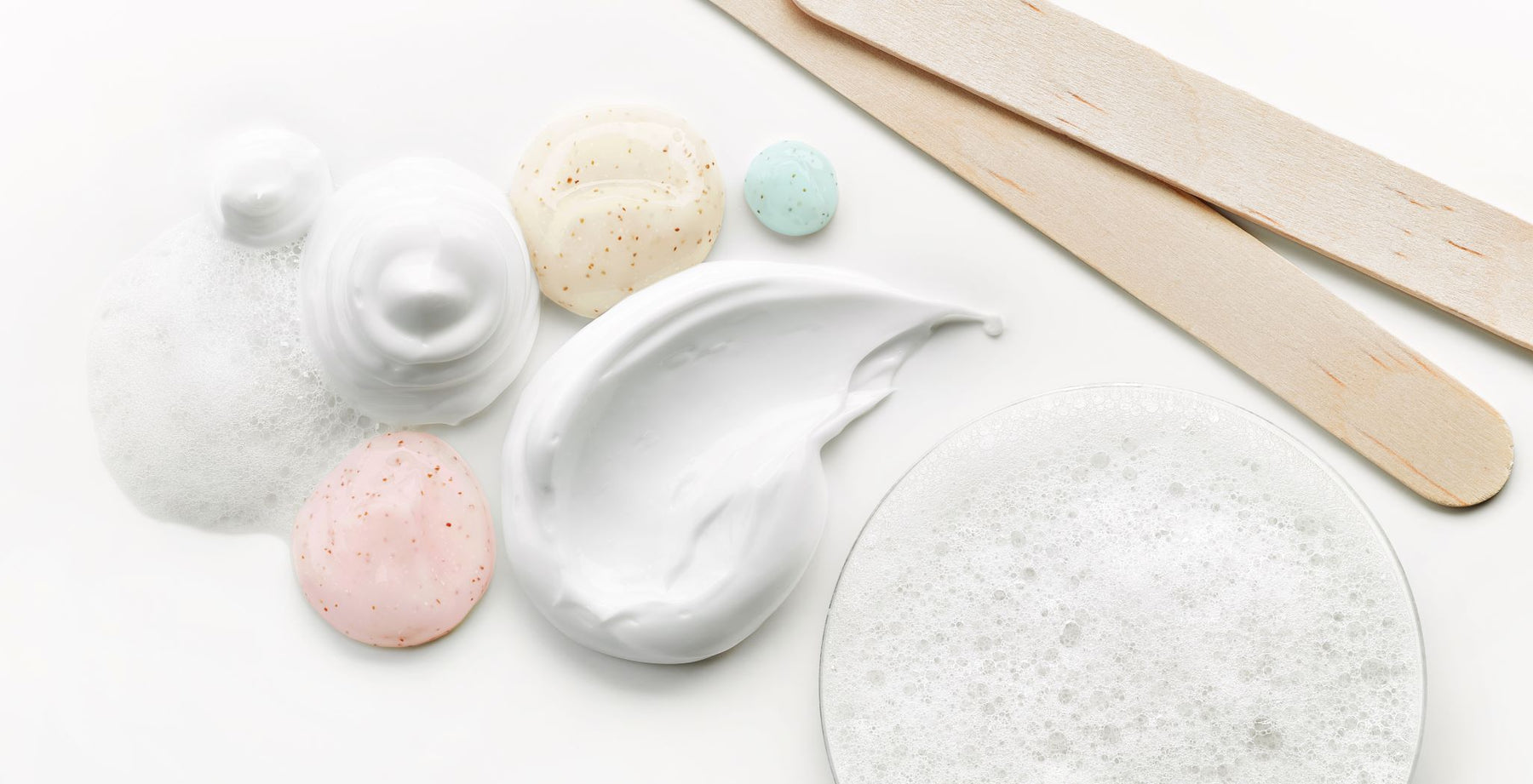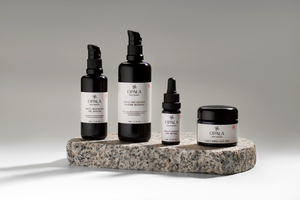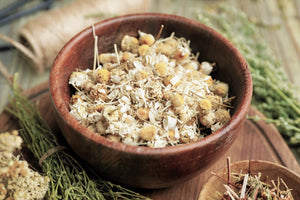
Gel, Lotion, Cream or Ointment?
Learn to choose the right one for your skin.
If you've ever wondered why there are so many different names for your everyday skin products, from creams, moisturisers to lotions and gels, you're not the only one! It's easy to think that these are basically different terms for the same type of product, but there's a lot more to it than that - and understanding the subtle differences can help you find the most suitable solution for your very unique skin.
Let's start by checking your skin type and condition!
SKIN TYPE
The biology of the skin is very complex, and there are number of methods used to classify the different skin determined by genetics. These methodes include the measurements of skin microrelief, pH, oiliness, water content of the stratum corneum (outermost layer of the skin) and transepidermal water loss (TEWL). Dermatologists usually classify the skin for 4 basic categories.
- Normal skin
- Dry skin
- Combination skin
- Oily skin
There is an other skin classification method (Fitzpatrick) which describes a way to classify the skin by its reaction to exposure to sunlight (phototype). This can help to predict your overall risk of sun damage and skin cancer.
SKIN CONDITION / CONCERN / DISORDER
Unlike skin type, your skin condition can vary during the course of your life. This is determined by many factors, both internal and external, from climate and pollution to medication, stress, and menopause. The most common types of skin conditions are:
- Dehydrated
- Ageing
- Pigmented
- Damaged, irritated (eczema, rosacea, sun damage, etc.)
- Acneic
SKINCARE FORMULA TYPES
Now that we've reminded ourselves of your skin type and concern, let's get into the different skincare formula types you can find. They are not difficult to distinguish from one another, with key differences around their feel, absorption process, and typical ingredients.
We will take each in turn starting with the lightest and building up to the heaviest.
1. What is a gel?
Easily recognizable because gels are transparent or semi-transparent. They are usually oil-free and water-based: thus, gels absorb fast. The texture of a gel is similar to jelly, it’s light and it isn't sticky. You may not even feel it on your skin, which makes it a popular option for those who are looking for lighter options.
Because of its light consistency, gels are especially useful in hot summer months, providing strong and effective hydration without building up an oily sweat. Many are popular for their 'matte effect'.
| A gel is brilliant choice to hydrate oily skin without feeling sticky or greasy. |
2. What is a lotion?
Lotions and creams are emulsions - oils mixed with water in a way they are able to form a single mixture. A lotion has between 5-25% oil-soluble substances and oils. This gives it a light texture and better moisturising properties than gels, while remaining light enough to apply for both oily and normal skin.
| Choose a lotion if your skin is thirsty but not extremely dry. |
3. What is cream?
Creams are similar to lotions in that they are also emulsions, but they are generally thicker. This is because they have between 15-50% oil content, and are recognisable since they maintain their shape when dispensed onto your finger. The thicker texture means it normally takes more time for the skin to absorb creams - while this may feel more sticky on your skin, it means it is able to create a longer lasting protective layer on the skin, preventing it from drying out or be exposed to pollution.
Creams can be applied fewer times a day, and are most effective when used overnight.
| Creams are most effective in the winter months given their thicker, more protective texture. They are best used for dry or sensitive skin types. |
4. What is an ointment?
Finally, ointments - the heaviest and thickest option of them all. Like creams, ointments create a protective layer on the skin. But since they are a semisolid with thick texture, and are based entirely on oils, the film around the skin is much stronger, taking even longer to absorb than creams. It is often very greasy and almost impervious, making it less common in everyday skincare products.
| Because of its long-lasting absorption, ointments are mostly used for medicinal purposes. Sensitive skin types do not normally tolerate ointments. |
+1 And what is a moisturiser?
You will most often come across this terms when looking for a facial product. It isn't a skincare formulation category in its own right - it can refer to any of the categories listed above. Gels, lotions, creams, ointments can all be moisturisers as long as they keep your skin more hydrated. In addition to its ability to prevent dry, flaky skin, moisturisers often provide some sun protection and anti-ageing benefits. They usually contain a number of active ingredients to treat skin concerns.
Advantages of using a good moisturiser:
- Protects the skin barrier, preventing flaking and irritation
- Anti-ageing effects: keeps the face, chest, neck and arms looking younger, reducing the appearance of wrinkles
- Hydrates: preventing dry and tired looking skin
- Other skin improvement benefits, like anti-acne, anti-inflammation, oil balancing etc.
Many skincare companies recommend using a cream on dry and dehydrated skin, while gels and lotions are most commonly used to treat normal to oily skin. The latter two have become more and more popular in the recent years due to the way they work - internally. Gels and lotions hydrate the skin from within, activating after they are absorbed, preventing any greasy side-effects.
But remember that just because gels and lotions are more common at the moment, they are not the perfect solution to every skin type and concern. A better option for dry and dehydrated skin are creams, since they last longer and provide long-term protection outside the skin.



